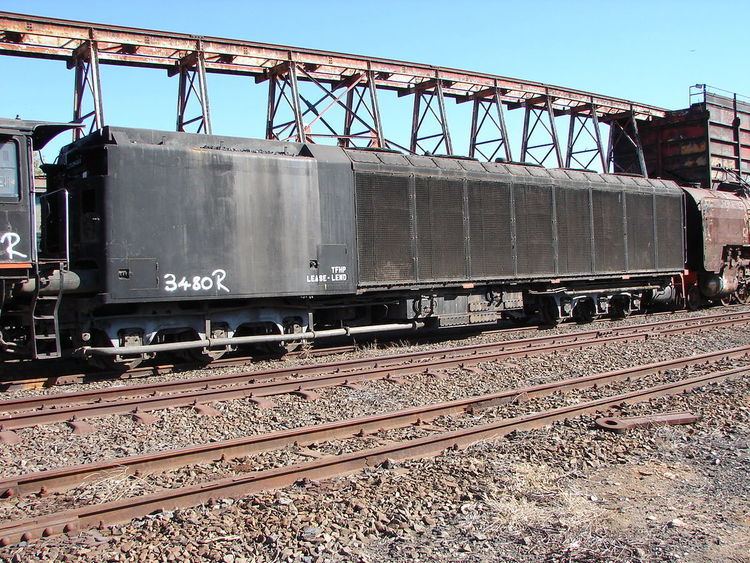 | ||
South African steam locomotive tenders were classified by means of type letters and sometimes numbers, while locomotive specifications included a list of permissible tenders which could be used with each engine class.
Contents
Railway development
In South Africa, all early mainline railway construction took place working inland from harbours and ports. Construction of these lines began in the years from 1859 to 1887.
On most of these lines, the first locomotives were tank engines, which were in most instances acquired specifically for use during line construction. The first revenue-earning locomotives, on the other hand, were often tender engines from the outset, most notably on the three systems of the Cape Government Railways (CGR). At the other end of the spectrum and in spite of their inherent limited coal and water capacities, the Natal Government Railways (NGR) struggled on with tank locomotives in mainline service until 1904, before it finally adopted tender locomotives, while the Nederlandsche-Zuid-Afrikaansche Spoorweg-Maatschappij (NZASM) relied exclusively on tank engines for the full duration of its existence.
Early tenders
In 1860, the Cape Town Railway & Dock 0-4-2 of the Cape Town-Wellington Railway was the first tender locomotive type to enter mainline service in South Africa. The first of these came ashore in Cape Town on 20 March of that year. It had a small two-axle tender with a 1,250 imperial gallons (5,680 litres) water capacity.
Early CGR mainline locomotives were tank-and-tender engines with optional tenders, which were usually only used during longer trips. The first of these was the CGR 2nd Class 2-6-2TT, which entered service on all three systems of the CGR in 1875 and 1876. It also used a two-axle tender, with a 2 long tons (2.0 tonnes) coal and a 900 imperial gallons (4,090 litres) water capacity.
The first three-axle tenders appeared in South Africa during the following year, also on the CGR, on the two versions of the CGR 1st Class 2-6-0 by Beyer, Peacock and Kitson respectively. Both entered service in 1876.
The first bogie tenders in South Africa were also three-axle vehicles, on the CGR Eastern System's 3rd Class 4-4-0 and 4th Class 4-6-0TT of 1884. Both used the same tender, which had the leading axle mounted in a rigid frame, while the other two axles were mounted in a bogie.
The first proper bogie tenders to enter service in South Africa, with two two-axle bogies, came with the first batch of the CGR 7th Class 4-8-0 of 1892.
Tender type classification
The South African Railways (SAR) era began in 1910, upon the amalgamation of the three former Colonial railways, the CGR, NGR and Central South African Railways (CSAR). Since many tender types are interchangeable between different locomotive classes and types, most South African tender steam locomotives could be equipped with a variety of different tender types, with different coal and water capacities. A tender classification system was therefore adopted by the SAR. Tenders were classified by means of type letters and sometimes numbers, while the specifications of most individual locomotive classes included a list of permissible tender types which could be used with each class.
Tenders of locomotives which were considered obsolete in 1912, when the renumbering of locomotives of the three component railways onto the SAR roster was implemented, were not classified. The type classification is made up of two letters and, when required, a number.
First letter
The first letter of the tender type indicates the classes of engines to which it can be coupled.
Second letter
The second letter of the tender type, or letter and number, indicate the tender's water capacity.
A number, when added after the letter code, indicates differences between similar tender types, such as function, wheelbase or coal bunker capacity.
Permissible tenders
Tender types other than those specified on each locomotive diagram, were not allowed to be coupled to the engines concerned without the approval of the Chief Civil Engineer. Even in respect of some permissible tenders, it was sometimes necessary to make slight structural alterations before the substitution of a tender with the same initial letter designation could be effected.
Tenders which had been altered to suit engines fitted with rigid platforms, had to be reserved for such engines only, unless instructed otherwise by the office of the Chief Mechanical Engineer.
Reclassification
Several tender types were reclassified, for various reasons.
